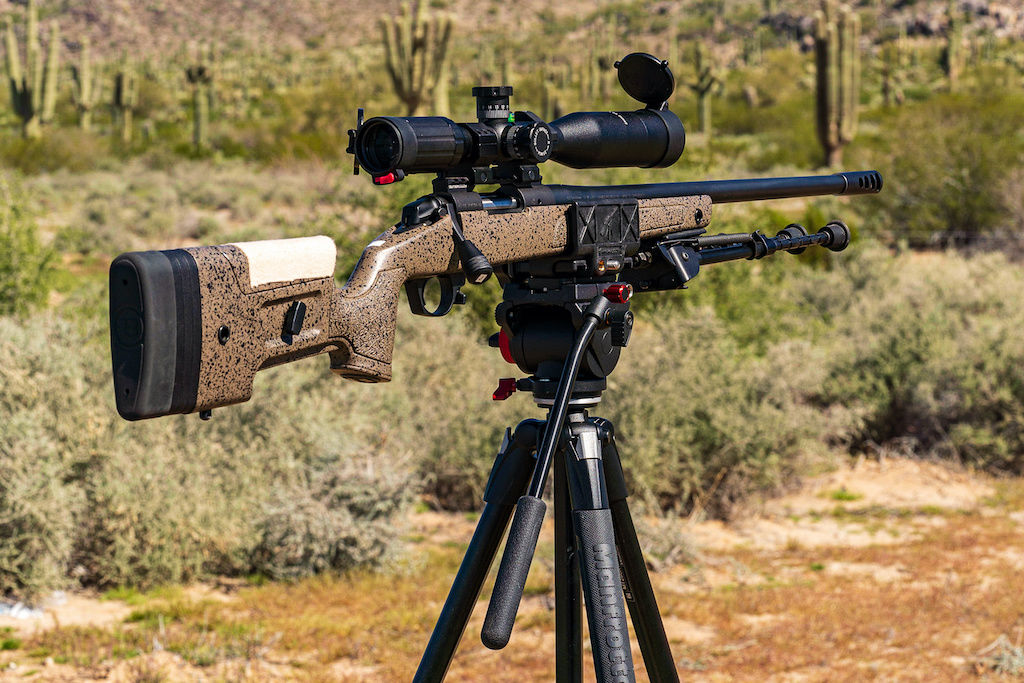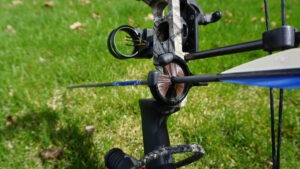In the world of bass fishing, having the right equipment can make all the difference in your success on the water. One essential piece of equipment that every angler needs is a reliable trolling motor. Whether you’re navigating through dense vegetation or quietly drifting along the shoreline, a trolling motor allows you to control your boat’s movement without disturbing the fish. In this comprehensive guide, we will explore the ins and outs of trolling motors, discuss their importance in bass fishing, highlight key features to look for in a good trolling motor, delve into the different types available, and provide guidance on selecting the right shaft length for your specific needs.
Understanding Trolling Motors
What is a Trolling Motor?
A trolling motor is an electric motor that is mounted on the bow, transom, or engine of a boat. It is specifically designed to provide the necessary power and control for maneuvering the boat at slow speeds. Trolling motors are commonly used in fishing to silently move through the water, allowing anglers to get close to their desired fishing spots without scaring away the fish.
These motors are typically powered by rechargeable batteries, which provide a quiet and environmentally-friendly alternative to traditional gasoline-powered engines. With advancements in technology, trolling motors have become more efficient and powerful, allowing anglers to navigate through various water conditions with ease.
One of the key features of trolling motors is their ability to be controlled remotely. Anglers can operate the motor from a handheld controller or a foot pedal, giving them the freedom to focus on fishing without having to constantly adjust the motor’s speed or direction.
Importance of Trolling Motors in Bass Fishing
When it comes to bass fishing, stealth is key. Bass are known for their sensitivity to noise and disturbances in the water. Trolling motors play a crucial role in maintaining a quiet and controlled approach, allowing anglers to sneak up on bass without alerting them.
By using a trolling motor, anglers can move through the water silently, reducing the chances of spooking the fish. This is especially important when fishing in shallow waters or areas with heavy vegetation, where any sudden noise or disturbance can send the bass into hiding.
Additionally, trolling motors enable precise boat positioning, which is essential when targeting specific structures or navigating through intricate waterways. Anglers can easily adjust the speed and direction of the motor to maintain their desired position, whether it’s holding steady near a submerged tree or maneuvering through a narrow channel.
Furthermore, trolling motors are equipped with features such as GPS and sonar technology, which provide anglers with valuable information about the underwater environment. GPS allows anglers to mark their favorite fishing spots and navigate back to them with ease, while sonar technology helps them locate schools of fish and identify underwater structures.
Overall, trolling motors have revolutionized the way anglers approach bass fishing. With their quiet operation, precise control, and advanced features, these motors have become an indispensable tool for any serious bass angler. Whether you’re a professional tournament angler or a weekend warrior, a trolling motor can greatly enhance your fishing experience and increase your chances of success on the water.
Key Features of a Good Trolling Motor
When it comes to choosing a trolling motor, there are several key features that you should consider. These features not only affect the performance of the motor but also impact your overall fishing experience. Let’s take a closer look at some of the important factors to keep in mind.
Power and Thrust
One of the primary considerations when choosing a trolling motor is the power and thrust it provides. The power of a trolling motor is measured in pounds of thrust, with higher thrust ratings indicating more power. The appropriate thrust rating for your boat will depend on its size and weight. It’s essential to choose a trolling motor with sufficient power to ensure smooth and efficient operation, especially in adverse conditions such as wind or strong currents.
Having a powerful trolling motor not only helps you navigate through challenging waters but also allows you to maintain control over your boat. Whether you’re fishing in a river with a strong current or battling against the wind on a large lake, a motor with ample power and thrust will make your fishing experience much more enjoyable.
Battery Life and Efficiency
A trolling motor’s battery life and efficiency are critical factors to consider, as they directly impact your fishing experience. Opt for a trolling motor that offers a good balance between power and battery consumption. This way, you can enjoy extended fishing sessions without worrying about running out of power.
Additionally, consider choosing a motor with advanced battery-saving features, such as variable speed control or digital maximizers. These features can help optimize your battery usage, allowing you to fish for longer periods without the need for frequent recharging. With improved battery life and efficiency, you can focus more on your fishing and less on the technicalities of your motor.
Control Options
Trolling motors come with various control options, each offering its own set of advantages. Hand-operated motors are typically the most affordable and straightforward to use. They provide a simple and intuitive control mechanism, allowing you to steer your boat with ease.
On the other hand, foot-operated motors provide hands-free operation, allowing you to focus on your fishing. With foot control, you can conveniently maneuver your boat while keeping your hands free to cast, reel, or handle your fishing gear. This control option is particularly popular among anglers who prefer a more immersive fishing experience.
If convenience is your priority, then remote-controlled motors offer the ultimate flexibility. With a remote control in hand, you can control your motor from anywhere on your boat. This means you can adjust the speed, direction, and other settings without having to be physically near the motor. Remote control options are especially beneficial for anglers who want to have complete control over their boat’s movement while staying in their preferred fishing spot.
Durability and Construction
Since trolling motors are constantly exposed to harsh conditions such as water, sunlight, and impact, it’s crucial to choose one that is built to withstand these elements. Look for motors made from high-quality materials, such as marine-grade aluminum or stainless steel. These materials offer superior durability and corrosion resistance, ensuring that your motor can withstand the test of time.
In addition to the materials used, consider features like sealed electronics and reinforced shafts. Motors with sealed electronics are protected from water intrusion, preventing damage and ensuring reliable performance even in wet conditions. Reinforced shafts provide added strength and stability, reducing the risk of bending or breaking when faced with obstacles in the water.
By selecting a trolling motor with excellent durability and construction, you can have peace of mind knowing that your investment will last for years to come. You can focus on your fishing adventures without worrying about the motor’s reliability or needing frequent repairs.
Types of Trolling Motors
Trolling motors are an essential tool for bass anglers, providing precise control and maneuverability on the water. There are several types of trolling motors available, each with its own unique features and advantages. Let’s take a closer look at the three main types: bow-mounted motors, transom-mounted motors, and engine-mounted motors.
Bow-Mounted Motors
Bow-mounted trolling motors are the go-to choice for many bass anglers. These motors are mounted on the front (bow) of the boat, allowing for excellent control and maneuverability. With features like quick-release mounts, adjustable shaft lengths, and integrated sonar capabilities, bow-mounted motors offer versatility and adaptability to various fishing styles and conditions.
Whether you’re fishing in shallow waters or navigating through dense vegetation, a bow-mounted motor allows you to effortlessly adjust your speed and direction, ensuring precise boat positioning. The ability to control your boat’s movement with precision is crucial when targeting specific areas or working along structure-rich shorelines.
Furthermore, bow-mounted motors are designed to be easily deployed and stowed, allowing for quick and efficient setup on the water. This convenience is especially beneficial for anglers who frequently move between fishing spots or need to adjust their trolling speed on the fly.
Transom-Mounted Motors
Transom-mounted trolling motors are another popular choice among bass anglers. These motors are attached to the back (transom) of the boat, providing a cost-effective and straightforward solution for powering your vessel. While they may lack some of the advanced features found in bow-mounted motors, transom-mounted motors still deliver ample power and control for most bass fishing situations.
One of the main advantages of transom-mounted motors is their ease of installation. With a few simple steps, you can have your motor up and running, ready to tackle the waters. This convenience makes them an excellent choice for anglers who prefer a hassle-free setup or frequently switch between different boats.
Transom-mounted motors are also known for their durability and reliability. Built to withstand the rigors of bass fishing, these motors can handle rough conditions and provide consistent performance throughout your fishing adventures.
Engine-Mounted Motors
For anglers seeking the ultimate in control and power, engine-mounted trolling motors are the way to go. Also known as auxiliary motors or kicker motors, these motors are directly mounted onto the boat’s main engine. Engine-mounted motors are typically used for slow-speed navigation or as a backup in case the main engine fails.
Engine-mounted motors offer exceptional control, allowing anglers to finely tune their boat’s speed and direction with precision. This level of control is particularly useful when fishing in challenging conditions or when trying to maintain a specific trolling speed. Additionally, engine-mounted motors provide the power needed to navigate through strong currents or against the wind.
However, it’s important to note that engine-mounted motors are generally more expensive than other types of trolling motors. They also require professional installation to ensure proper integration with the main engine. Despite the higher cost and installation complexity, many serious bass anglers consider engine-mounted motors to be a worthwhile investment for their enhanced performance and reliability.
When choosing a trolling motor, it’s essential to consider your specific fishing needs and preferences. Whether you opt for a bow-mounted, transom-mounted, or engine-mounted motor, each type offers its own set of advantages to enhance your bass fishing experience.
Selecting the Right Shaft Length
Boat Size and Water Depth Considerations
Choosing the correct shaft length for your trolling motor is crucial to ensure optimal performance and efficiency. The shaft length should be based on your boat’s overall size and the typical water depth in which you’ll be fishing. A trolling motor with a shaft that’s too short may cause the propeller to cavitate in shallow waters, reducing overall thrust and potentially damaging the motor. Conversely, a motor with a shaft that’s too long may drag in the water and create additional resistance, decreasing battery life and maneuverability.
Adjustability and Flexibility
Some trolling motors offer adjustable shaft lengths, allowing you to customize the motor’s depth based on your specific needs. This flexibility can be particularly beneficial when fishing in fluctuating water levels or diverse fishing environments. If you anticipate fishing in a variety of conditions, consider investing in a trolling motor that offers adjustable shaft length options for maximum versatility.
By understanding the ins and outs of trolling motors, evaluating their key features, exploring the different types available, and selecting the right shaft length for your needs, you’ll be well-equipped to make an informed decision when choosing the best trolling motor for your bass fishing adventures. Remember, a reliable and efficient trolling motor can greatly enhance your overall fishing experience and increase your chances of success on the water.


